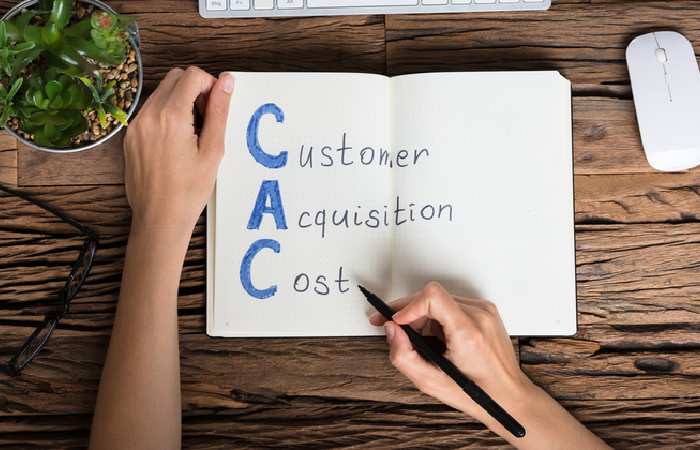Guide to Customer Acquisition Cost (CAC)
The cost of acquiring a new client, or customer acquisition cost (CAC), is a key performance indicator for every business. It is a valuable metric for gauging the efficacy of marketing campaigns. The customer acquisition cost (CAC) is determined by totaling the expenses incurred to convert leads into customers (including but not limited to marketing, advertising, sales staff, and more) and dividing the total by the total number of customers gained.
Table of Contents
What is the CAC (Cost of Acquiring a Customer)?

The CAC quantifies the sum spent by a company to get one new client. The customer acquisition cost (CAC) is a vital business indicator that considers the price of all assets used in the sales and marketing of a product or service.
Examining a company’s efficiency by comparing CAC to other metrics is standard practice. It includes Lifetime Value (an estimate of how much income an account will bring in during its lifetime by continuing to buy or subscribe for a longer length of time) or Monthly Recurring Revenue (a measurement of revenue production each month).
The importance of Customer Acquisition Cost(CAC)
Many companies and investors prioritize CAC as a significant business statistic. Many businesses fail because their owners misjudge the value of new customers.
-
Increasing the Profit from Investments
The marketing return on investment may be calculated with the help of the customer acquisition cost. Using CAC, a business may determine which customer-getting strategies get the most bang for their buck.
-
Increasing the Company’s Profits and Margins
A company’s capacity to assess its value per customer and boost its profit margins is directly correlated with its CAC understanding.
In what way is CAC Determined?
To determine CAC, divide the cost of customer acquisition (including sales and marketing) by the total number of new customers gained during the calculation period. Successful CAC calculation may be either straightforward or involved.
How to quickly determine CAC is as follows: CAC = MCC ÷ CA
- MCC: Total acquisition-related marketing campaign costs
CA: Cumulative Customers Acquired
For anyone interested in the intricate CAC calculation process, here it is: CAC = (MCC + W + S + PS + O) ÷ CA
- MCC: Total acquisition-related marketing campaign costs
- W: Wages related to marketing and sales
- S: The total of all sales and marketing software costs
- Added Professional Services (PS): Consultants and Other Marketing and Sales Professionals
- O: Overhead
- CA: Cumulative customers acquired
Strategies for Minimizing CAC
You may reduce your CAC by focusing on leading to customer conversion, increasing customer value, and maintaining customer engagement with a customer relationship management (CRM) platform.
-
Boost your Rate of Lead Conversion
Google Analytics may reveal trends like the frequency users depart their baskets after adding an item. Suppose people are leaving your website without clicking on subsequent pages. In that case, you may want to examine the loading time of your pages and consider methods to make your landing pages more attractive. Furthermore, you must ensure that your site displays correctly on mobile devices and that customers can quickly complete their purchases. Bettering the customer experience across the board will increase sales.
-
Improve the quality of your Service Or Product
Adding features that other businesses have introduced may not have the expected impact because of the subjectivity of people’s perceptions of the value of your goods and services. Time spent communicating with consumers (through surveys or emails) is the most efficient way to learn what those customers require. You may analyze numbers like client retention rates and qualitative data like comments left on review sites. It is possible that enhancing one might improve the other if you find a link.
-
Utilize a Customer Relationship Management System
Tracking new customers, where they are in the sales funnel, how much they are spending, when they are making purchases, and how loyal they are can all be done with a customer relationship management tool. You may also use it to handle email lists and campaigns like promotions, seasonal email marketing, and drip strategies, which distribute enticing information through email at regular intervals and are similar to promotions.
Marketing returns may be effectively measured using CAC. You receive a quantified estimate of what each client spends in the near run, and in the long term, you obtain a perspective of how much money you generate from each conversion.
